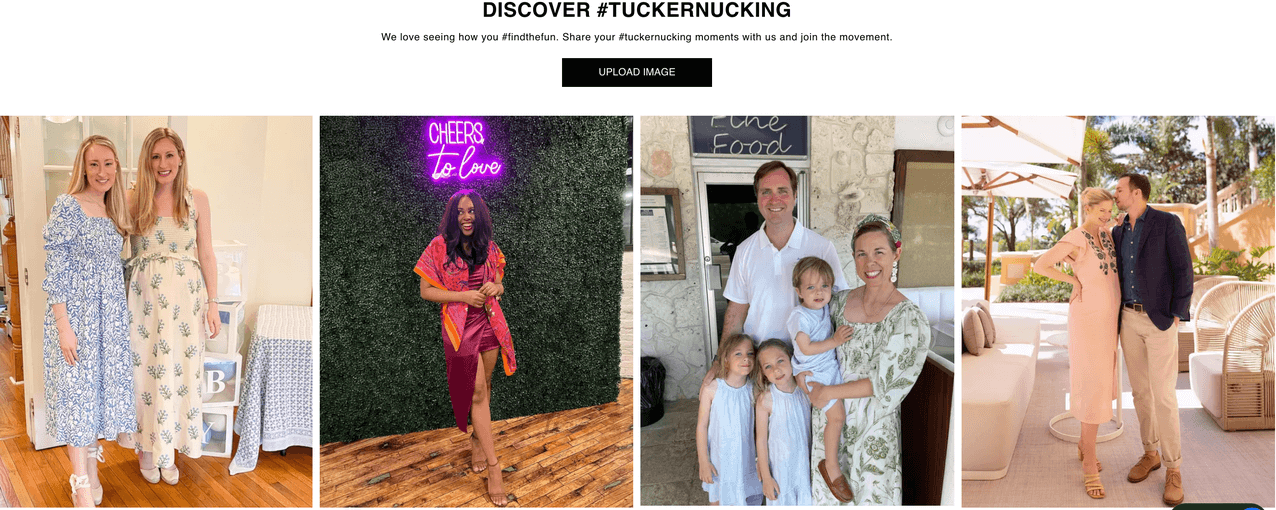
We’re back with a new addition to our email best practices series. The humble back-in-stock email is the Antman of marketing tactics. Like Marvel’s underdog superhero, the power of a good back-in-stock email is often underestimated. It doesn’t get as much attention as other strategies or even other types of marketing emails or Ironman.
It’s a tool you don’t want to have to use frequently, but when you do, it makes a big impact.
When products are unavailable, retailers risk losing customers to their competitors. And they might not come back, since a convenient shopping experience is the most important factor for brand loyalty. But you know what’s really inconvenient? Trying to buy a product you really want, only to find it’s sold out.
The best way to make up for the disappointment customers feel when they can’t order the product they have their heart set on is to announce its return. And to do so triumphantly. That’s when the back-in-stock email can swoop in to save once-loyal customers and lost sales — even if the customer switched products or brands since the out-of-stock dilemma.
Why you need a back-in-stock email strategy in your toolkit
Stockouts happen. Sometimes you can’t predict how popular a product will be, there’s supply chain issues, late deliveries, or you under-order. The occasional stockout isn’t the end of the world, but it’s not something you want to make a habit of. Or worse — gain a reputation for.
In a report about mitigating product scarcity, stockouts were the cause of a negative shopping experience for 30% of consumers. After encountering the first stockout from a brand, 31% won’y make a purchase at all or will switch brands. That increases to 70% after the third time.
So, when you do have a stockout, you can ease the blow to customers by offering a back-in-stock notification when the product returns or recommending similar products. While out-of-stock emails have to deliver the bad news, back-in-stock emails get to be the good guy who saves the day. Like Antman.
And consumers are happy to receive them, by the way. In a report on email marketing ROI, back-in-stock emails received a 65.32% open rate, the highest among the most popular campaign types. Another email marketing benchmark report found that back-in-stock emails have some of the highest conversion rates, as well.
A back-in-stock email is well positioned to perform since you already know the customer is interested in the product based on their shopping behavior. They may have visited the product page, tried to add the item to their shopping cart, or signed up for a waitlist. Or worst-case scenario: actually purchased the item and had to be refunded.
Putting the effort into informing customers that an item they were interested in is back is a thoughtful, personal gesture. But even though the back-in-stock email is a decidedly positive message to send to customers, you still have to make an effective case to finally close the deal.
Elements of a winning back-in-stock email
When you’re ready to re-engage customers with a back-in-stock email, make sure it’s equipped with the most persuasive and useful components for the best results.
Email list
With first-party data tracking and e-commerce website analytics, you can create customer segments according to shoppers who viewed or interacted with out-of-stock products. Align the recipients with the item they interacted with. For each list, include the emails of customers who signed up for a waitlist, visited the product page, or tried to purchase the product when it was out of stock.
If a particularly popular product comes back, you could consider emailing your entire customer database. Even if a customer wasn’t interested in that product initially, discovering the hype might prompt them to take a second look.
Subject line
The subject line is the first incentive you give recipients to click. The first essential element is to clearly communicate that an item is back in stock in the subject line. Use key terms like “back in stock,” “restocked,” “back on our shelves,” etc. The subject line should catch the user’s attention and give them context. And don’t forget that subject lines are emoji-friendly, so don’t hesitate to show off your emoji game.
For example, if a shopper was looking at the product page of a sold-out dress, the subject line could be, “You’re in luck: That dress you were eyeing is back 👗 👀 😉”
If a shopper signed up for a waitlist for an item on backorder, the subject line could be “You’re at the front of the line: Get your favorite lipstick💄, just restocked!💋”
Content details
Your email messaging should make your case with details that remind shoppers why they were interested in this product in the first place. Also include reasons why they should still be. Put the basics up front, like the name of the product, an image that attractively showcases it, and the price.
Show what’s awesome about the product and why it’s in demand. Maybe it’s a top seller, a limited release, or a seasonal item. Highlight the best features and applications of the product. Does it make a great gift? Is it perfect for a certain occasion? Does it have new or improved features? What makes it unique, special, or better than something similar from a competitor?
Social proof
Back up those claims that the product is as amazing as you say with recommendations from real customers. The best way to do this is to include user-generated content (UGC) in the email. Influential UGC can take different forms, including reviews and testimonials, or photos and videos that customers post on social media or upload on a brand’s website. These types of UGC will add a layer of credibility (and a little FOMO) to your back-in-stock emails.
Visual UGC galleries are an eye-catching way to showcase how customers enjoy and experience products. These images help customers visualize the product in their lives and add to the email’s aesthetic appeal.

In addition, include helpful reviews to complement the featured products in back-in-stock emails. About 80% of shoppers trust online reviews, and nearly 40% rely on them to make purchasing decisions, so they’re an important piece of social proof to strengthen emails.
This back-in-stock email example from Prima checks all the boxes. The subject line is clear and to the point: BACK IN STOCK: Beyond Body Oil. The product is showcased front and center with a high-quality photo. The copy offers convincing value propositions and instills a sense of urgency and scarcity. It includes a prominent call to action to shop the product and a carousel of glowing customer reviews.
Calls to action
Direct customers to take the next step with clear and convincing calls to action (CTAs). These are the buttons linked to the product page where customers can add to cart or make a purchase. You can include multiple CTAs for the same action in different places and with different wording or include a variety of different CTAs for different products or sections of your website.
Some conversion-inspiring CTAs include discounts and promo codes for the item, while others convey urgency. Something like “get yours before it’s gone.”
You should also include any other complementary CTAs that could prompt conversions or increase average order value (AOV). CTAs for similar or “people also bought” products are effective for customers who are no longer interested in the back-in-stock product, but might be interested in a related product. Likewise, you could also include CTAs for accessories or add-ons.
This back-in-stock email example from Daily Harvest combines the biggest consumer takeaways succinctly in the subject line: Get $40 off + back-in-stock faves. It immediately creates urgency with “HURRY, HURRY” in all caps, and it has an enticing photo as the focal point and includes a special back-in-stock promo code at the top of the email.
It also demonstrates how to cross-sell effectively by including several CTAs of multiple different back-in-stock products.
Back-in-stock email template
Subject:
👀 [item] is BACK IN STOCK
Body:
Hello [customer’s name],
The GOOD news you’ve been waiting for – [item] is back in stock!
Don’t miss out again, use the link below to purchase. Hurry, while stocks last!
Thank you,
[company name]
Set your back-in-stock email up for success
Have proactive measures in place so when there’s an opportunity to deploy a back-in-stock email, it’s ready to hit the inbox running. Start your customer segment based on who has viewed, clicked on, or attempted to purchase the product. Have the UGC featuring the product ready to add to the email. And create the template for the email in advance.
Start building up your collection of UGC to equip your emails with the social proof shoppers need to click and convert. See how Bazaarvoice can help you collect influential content that represents your customers. Or learn more from our best practices email series:
19 email marketing tips (that actually work in 2022)




